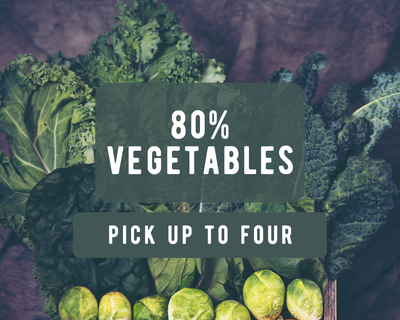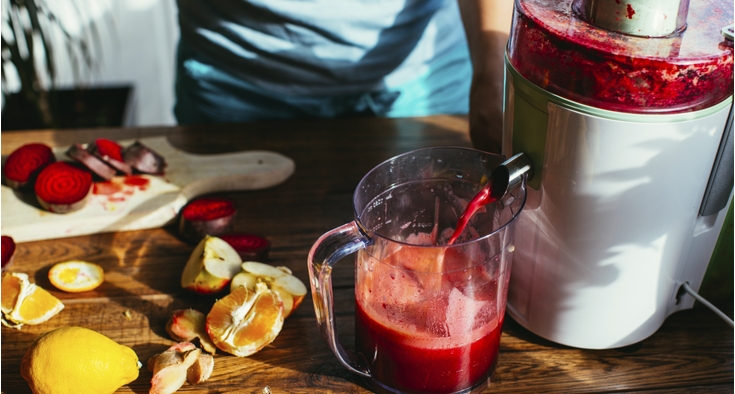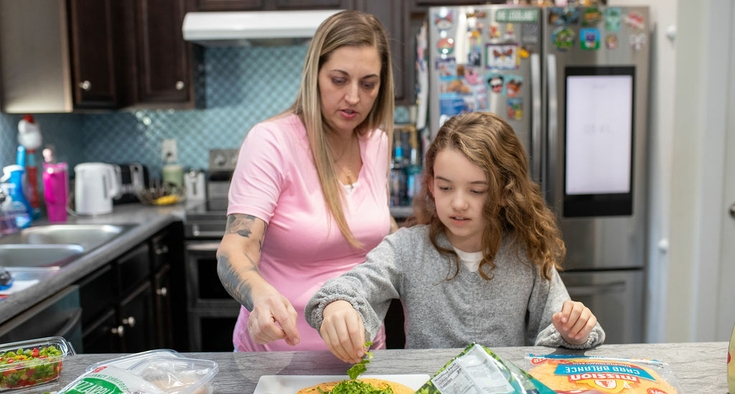Wondering if you should buy a juicer to get more fruits and veggies in your diet? At first blush, it makes sense, right? What could be wrong with more fruits and vegetables, even in liquid form?
Bottom line: Save your money, said Kelly Homesley, a registered dietitian at Novant Health Bariatric Solutions - Elizabeth in Charlotte. Read on to learn why Homesley believes juicing isn't necessary, what appliance she recommends instead of a juicer, and some tips to boost health if you choose to juice.
Personalized help with achieving and maintaining a healthy weight.
Is juicing healthy?

Federal health guidelines encourage us to eat multiple cups of both fruits and vegetables each day. Juicing might seem like a good way to reach that goal.
However, the juicing process removes an important nutrient from the fruits and vegetables: fiber.
Fiber helps your body with digestion and gives you a feeling of satisfaction and fullness called satiety. Fiber also helps your body break down the sugar in fruits and vegetables slowly over time, so your blood sugar doesn't spike.
When you juice, you still get vitamins and minerals from the fruits and vegetables — but you’re also getting a lot of sugar, and none of the fiber that moderates the absorption of that sugar.
Additionally, juice can be very calorie-dense. For example, juicing celery, spinach, a banana, a mango, pineapple, and an apple may yield one serving. It’s unlikely that you would have eaten all of these fruits and vegetables in one meal, Homesley said, but now you're drinking all the sugar and calories in a few gulps — without all the nutrients and the fiber that will keep you full. A glass of juice can have more sugar than a soft drink.
Is the sugar in fresh juice bad, though? It came from fruits and vegetables.
It’s true that some sugars come from healthier sources than others. For example, the sugar in an apple or a cup of milk is “naturally occurring” – part of the food. This is different than “added sugar,” like when you put sugar into your coffee or baked goods – the sugar wasn’t there to begin with.
Naturally occurring sugars are usually nothing to worry about, because foods with them are nutritious and usually have fiber or protein to help your body more slowly digest the sugar. Eating naturally occurring sugar in whole fruits and vegetables is like getting money in a birthday card from your mom — it’s sweet, comes with love (fiber, vitamins, nutrients), and doesn't cause harm.
But if you remove the fiber and leave the sugar, it affects your blood sugar similarly to how a soft drink would: with rapid spikes and drops. This can impact your mood and energy, contribute to your risk of cardiovascular diseases, and over time, can create insulin resistance and lead to other health problems.
Instead of the birthday card from your mom, drinking a glass of juice is more like a payday loan — it's fast, meets some of your needs, and gives you a quick high, but it comes with hidden costs.
Can juice fill in nutritional gaps?
Only 1 in 10 U.S. adults eats the recommended number of fruits and vegetables. If juice is truly the only way you are willing to consume fruits or vegetables, then drinking it in moderation is OK, Homesley said (see below for the dos and don’ts). But she'd rather have you explore how to make fruits and vegetables part of your diet.
- If you have issues with texture or taste — can you try different fruits or vegetables, or try them prepared another way?
- If preparation is your challenge, can you designate one or two days a week to cut up produce so it's ready to go, or buy pre-cut, frozen, or canned produce that requires less preparation? Contrary to what a lot of us assume, canned produce is often just as healthy as fresh or frozen, as long as you make sure there are no added sugars or salt.
- Are you filling up on the wrong things? Start with produce as the basis of your plate, and make sure you eat regular meals and snacks, Homesley said. If you're only eating twice a day, you may not have the opportunity to hit your produce goals. And you're also hurting your metabolism.
Fully intact fruits and vegetables let you get full from a healthy food that is low in calories and high in nutritional value. If you’re still concerned about gaps in your diet, Homesley suggests talking with your doctor about whether you should start taking a multivitamin, instead of starting a juice habit.
What’s better: Juicing or smoothies?
While Homesley doesn’t recommend juicing, using a blender to mix no more than one serving of fruit with other healthy ingredients like milk, oats, nuts, avocado, seeds, or yogurt can be a great choice. That’s because when you make smoothies, the blending process retains the pulp and fiber.
And everything in moderation: If you still want to make or purchase juice occasionally, here are Homesley's “dos and don’ts.”
Dos of juicing
DO follow the 80/20 rule: Your juice should be 80% vegetables to 20% fruit to limit sugar.
DO mix up a rainbow: Use different colored vegetables and fruits for a wider variety of vitamins and minerals.
DO watch your portion size: If you are going to juice, drink no more than 1/2 cup to 1 cup of juice in a day.
DO treat juice like a treat: If you love juice, create a healthy ritual: for example, serve it alongside your Saturday morning omelet. That way you can still enjoy it — while pairing it with something nutritious and limiting your consumption. Freshly squeezed juices, like those made with a juicer, are the least-processed option; if you’re purchasing juice, make sure it's 100% juice.
Don’ts of juicing
DON'T drink alone: Pair your juice alongside protein to slow down the blood sugar’s response to the juice. Homesley recommends pairing juice with eggs at breakfast or with nuts for a snack.
DON’T do a juice cleanse: If you're only consuming juice, you're missing protein, healthy fats, and fiber. Any weight lost is water weight, Homesley said, and the deprivation may cause you to make unhealthy choices when you resume eating. Instead, if you’re going to diet, make your choices sustainable.
DON’T encourage kids to drink juice: The American Academy of Pediatrics says that kids should not have any juice for the first year of their life; after that, focus on whole fruit instead.
DON’T stress about organics: If you're worried about pesticides, organic juice is better than conventional produce, and organic fruits and vegetables sometimes have more antioxidants. However, both types of produce have vitamins and minerals, and there isn't a significant difference in calorie and sugar content between the two.
Building a juice using the 80/20 rule
If you’re going to fire up that juicer occasionally or order juice at a juice bar, follow the 80/20 rule: Your juice should be 80% vegetables and 20% fruit, said Kelly Homesley, a registered dietitian at Novant Health Bariatric Solutions - Elizabeth. Here’s what that may look like:
- Cabbage
- Celery
- Kale
- Cilantro
- Cucumber
- Wheatgrass
- Spinach
- Parsley
- Bell pepper
- Fennel
- Tomato
- Broccoli
- Swiss chard
- Ginger root
- Carrots
- Mint
- Basil
- Beets

- Apple
- Pear
- Pineapple
- Peach
- Berries
- Orange
- Tangerine
- Pomegranate
- Grapes
- Mango
- Cantaloupe
- Honeydew
- Watermelon
- Kiwi
- Grapefruit
- Papaya
- Lemon
- Lime













